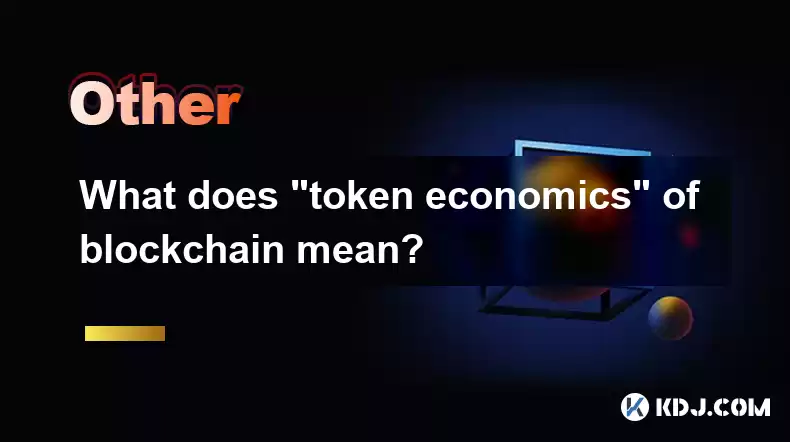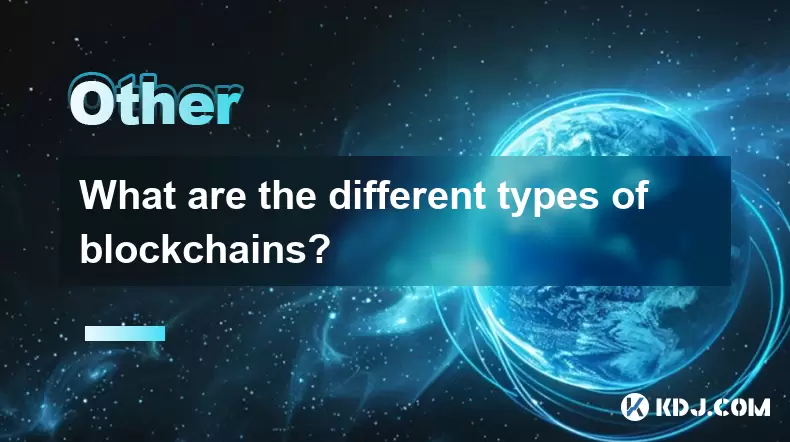-
 Bitcoin
Bitcoin $112400
-1.07% -
 Ethereum
Ethereum $3409
-3.27% -
 XRP
XRP $2.784
-6.60% -
 Tether USDt
Tether USDt $0.9997
-0.03% -
 BNB
BNB $739.3
-2.09% -
 Solana
Solana $158.0
-2.90% -
 USDC
USDC $0.9998
-0.02% -
 TRON
TRON $0.3213
-0.94% -
 Dogecoin
Dogecoin $0.1929
-5.01% -
 Cardano
Cardano $0.6974
-2.82% -
 Hyperliquid
Hyperliquid $36.69
-2.31% -
 Sui
Sui $3.327
-4.80% -
 Stellar
Stellar $0.3672
-5.18% -
 Chainlink
Chainlink $15.65
-3.07% -
 Bitcoin Cash
Bitcoin Cash $525.0
-1.68% -
 Hedera
Hedera $0.2291
-6.00% -
 Avalanche
Avalanche $20.91
-2.96% -
 Ethena USDe
Ethena USDe $1.000
0.00% -
 Toncoin
Toncoin $3.520
-1.12% -
 UNUS SED LEO
UNUS SED LEO $8.968
0.14% -
 Litecoin
Litecoin $105.7
0.26% -
 Shiba Inu
Shiba Inu $0.00001181
-1.79% -
 Polkadot
Polkadot $3.492
-2.08% -
 Uniswap
Uniswap $8.800
-3.10% -
 Dai
Dai $0.9999
-0.01% -
 Monero
Monero $289.9
-3.17% -
 Bitget Token
Bitget Token $4.243
-1.27% -
 Pepe
Pepe $0.00001006
-3.67% -
 Cronos
Cronos $0.1248
-5.68% -
 Aave
Aave $249.7
-2.50%
What does "token economics" of blockchain mean?
Token economics is vital for blockchain projects, defining how a cryptocurrency's value is created and sustained through supply, distribution, and utility within its ecosystem.
Mar 28, 2025 at 11:57 pm

Token economics is a crucial aspect of blockchain projects, defining how a cryptocurrency's value is created and sustained within its ecosystem. It's essentially the economic model governing the supply, distribution, and usage of a cryptocurrency token. Understanding token economics is vital for assessing the viability and potential success of a blockchain project. It dictates how incentives are aligned, how the network is secured, and how value is transferred and accumulated within the system.
Diving Deep into Token Economics
Token economics goes beyond simply assigning a value to a token. It's a complex system encompassing several key elements. It meticulously outlines the rules and mechanisms that govern the interaction between the token and its users, developers, and the overall network. A well-designed token economy incentivizes participation and fosters a thriving ecosystem. Conversely, a poorly designed one can lead to instability and ultimately, failure.
Key Components of a Token Economy:
Token Supply: This refers to the total number of tokens that will ever exist. A fixed supply can lead to scarcity and potential price appreciation, while an inflationary supply can encourage greater participation but potentially dilute existing holders' value. Understanding the token supply mechanism is paramount in assessing the long-term value proposition of a token.
Token Distribution: How tokens are initially allocated is crucial. This often involves pre-sales, airdrops, staking rewards, and team allocations. A fair and transparent distribution model is essential to build trust and prevent early concentration of power.
Token Utility: A token's utility defines its purpose within the ecosystem. Does it grant access to services, represent voting rights, or facilitate transactions? A strong utility model is vital for creating demand and driving long-term value.
Tokenomics and Governance: This component outlines the rules and mechanisms governing the token's supply and distribution over time. It often involves mechanisms like burning tokens to reduce supply or introducing new tokens to reward participation. A well-defined governance structure ensures the long-term sustainability and adaptability of the token economy.
Token Inflation/Deflation: This refers to the rate at which new tokens are created or removed from circulation. Inflationary models can encourage participation but might dilute value, while deflationary models can create scarcity but potentially hinder growth. The chosen inflation/deflation model significantly impacts the token's long-term price stability.
Incentive Mechanisms: These are the rewards and penalties designed to motivate users to participate in the network. This could involve staking rewards for securing the network, transaction fees, or governance participation rewards. Effective incentive mechanisms are crucial for network security and user engagement.
Examples of Token Utility:
Payment: Tokens can be used as a medium of exchange within the ecosystem.
Governance: Token holders can vote on proposals affecting the network's future.
Access: Tokens grant access to exclusive features or services.
Staking: Users can stake their tokens to secure the network and earn rewards.
Yield Farming: Users can lend or borrow tokens to earn interest.
Analyzing a Token Economy:
Analyzing a token economy requires a thorough understanding of its components and how they interact. Consider the token supply, distribution model, utility, governance structure, and incentive mechanisms. Assess the long-term sustainability of the model and its potential impact on the token's value. A robust token economy is designed to be sustainable and resilient to market fluctuations. It must be able to adapt to changes in the market and technology.
Understanding the Interplay of Factors:
The effectiveness of a token economy depends on the interplay between its various components. For instance, a fixed token supply coupled with high demand can drive price appreciation. Conversely, an inflationary supply with low demand can lead to price depreciation. A successful token economy balances the needs of all stakeholders while ensuring the long-term health of the network. The design should incentivize participation while maintaining a stable and predictable environment.
Challenges in Designing a Token Economy:
Designing a successful token economy is challenging. It requires careful consideration of various factors and a deep understanding of economic principles. Challenges include balancing inflation and deflation, ensuring fair distribution, and creating sustainable incentive mechanisms. Poorly designed token economies can lead to network instability, token devaluation, and ultimately, project failure. Thorough research and expert consultation are often necessary.
The Importance of Transparency:
Transparency is crucial for a successful token economy. All aspects of the token's supply, distribution, and utility should be clearly defined and readily accessible to the public. Transparency builds trust and encourages participation, which are essential for a thriving ecosystem. This includes clear documentation and readily available information.
Frequently Asked Questions
Q: What is the difference between a token and a coin?
A: While often used interchangeably, there's a subtle difference. A coin typically refers to a cryptocurrency that operates on its own blockchain (e.g., Bitcoin, Ethereum). A token, on the other hand, usually runs on an existing blockchain (e.g., an ERC-20 token on Ethereum).
Q: How can I assess the viability of a token economy?
A: Analyze the token's utility, distribution model, inflation/deflation mechanism, governance structure, and the overall sustainability of the proposed economic model. Look for transparency and a well-defined roadmap.
Q: What are some common pitfalls in token economics?
A: Common pitfalls include unrealistic tokenomics, unfair distribution, lack of utility, poor governance, and insufficient incentives for participation. A lack of transparency is also a significant red flag.
Q: Is a deflationary token always better than an inflationary one?
A: Not necessarily. Deflationary tokens can create scarcity and potentially drive up price, but they can also stifle growth and adoption if the deflation rate is too aggressive. Inflationary models can encourage participation but might dilute the value of existing tokens if not managed carefully. The optimal model depends on the specific project and its goals.
Q: How does token economics relate to network security?
A: A well-designed token economy provides incentives for users to participate in securing the network (e.g., through staking). The economic model should align the interests of users with the long-term health and security of the blockchain.
Disclaimer:info@kdj.com
The information provided is not trading advice. kdj.com does not assume any responsibility for any investments made based on the information provided in this article. Cryptocurrencies are highly volatile and it is highly recommended that you invest with caution after thorough research!
If you believe that the content used on this website infringes your copyright, please contact us immediately (info@kdj.com) and we will delete it promptly.
- Shiba Inu's Successor? Ruvi AI's ROI Forecast Turns Heads
- 2025-08-03 06:30:12
- Ruvi AI vs. Tron: Can AI Outpace the Crypto Giant on CoinMarketCap?
- 2025-08-03 07:10:12
- XRP ETF Hopes Fuel Altcoin Frenzy: Solana, Pi Coin, and the Next Big Thing
- 2025-08-03 07:10:12
- Price Prediction Palooza: Breakouts, Retests, and a Sprinkle of Crypto Magic
- 2025-08-03 06:35:12
- Ruvi AI: The AI Token on Cardano Set to Dominate After CMC Listing
- 2025-08-03 04:50:12
- Altcoins in the Spotlight: Cardano, Shiba Inu, and the Quest for Crypto Supremacy
- 2025-08-03 05:30:12
Related knowledge

What is the difference between on-chain and off-chain transactions?
Aug 02,2025 at 04:22pm
Understanding On-Chain TransactionsOn-chain transactions refer to digital asset transfers that are recorded directly on a blockchain ledger. These tra...

What is the double-spending problem and how does blockchain prevent it?
Aug 02,2025 at 01:07pm
Understanding the Double-Spending ProblemThe double-spending problem is a fundamental challenge in digital currency systems where the same digital tok...

What is the difference between a blockchain and a database?
Aug 01,2025 at 09:36pm
Understanding the Core Structure of a BlockchainA blockchain is a decentralized digital ledger that records data in a series of immutable blocks linke...

How does blockchain handle scalability?
Aug 02,2025 at 02:58pm
Understanding Blockchain Scalability ChallengesBlockchain scalability refers to a network's ability to handle an increasing volume of transactions wit...

What are the different types of blockchains?
Aug 03,2025 at 03:01am
Public Blockchains: Open and Decentralized NetworksPublic blockchains are the most widely recognized type of blockchain, characterized by their open a...

What is a hash in a blockchain?
Aug 02,2025 at 05:28am
Understanding the Concept of Hash in BlockchainA hash in the context of blockchain technology refers to a unique digital fingerprint generated by a cr...

What is the difference between on-chain and off-chain transactions?
Aug 02,2025 at 04:22pm
Understanding On-Chain TransactionsOn-chain transactions refer to digital asset transfers that are recorded directly on a blockchain ledger. These tra...

What is the double-spending problem and how does blockchain prevent it?
Aug 02,2025 at 01:07pm
Understanding the Double-Spending ProblemThe double-spending problem is a fundamental challenge in digital currency systems where the same digital tok...

What is the difference between a blockchain and a database?
Aug 01,2025 at 09:36pm
Understanding the Core Structure of a BlockchainA blockchain is a decentralized digital ledger that records data in a series of immutable blocks linke...

How does blockchain handle scalability?
Aug 02,2025 at 02:58pm
Understanding Blockchain Scalability ChallengesBlockchain scalability refers to a network's ability to handle an increasing volume of transactions wit...

What are the different types of blockchains?
Aug 03,2025 at 03:01am
Public Blockchains: Open and Decentralized NetworksPublic blockchains are the most widely recognized type of blockchain, characterized by their open a...

What is a hash in a blockchain?
Aug 02,2025 at 05:28am
Understanding the Concept of Hash in BlockchainA hash in the context of blockchain technology refers to a unique digital fingerprint generated by a cr...
See all articles

























































































